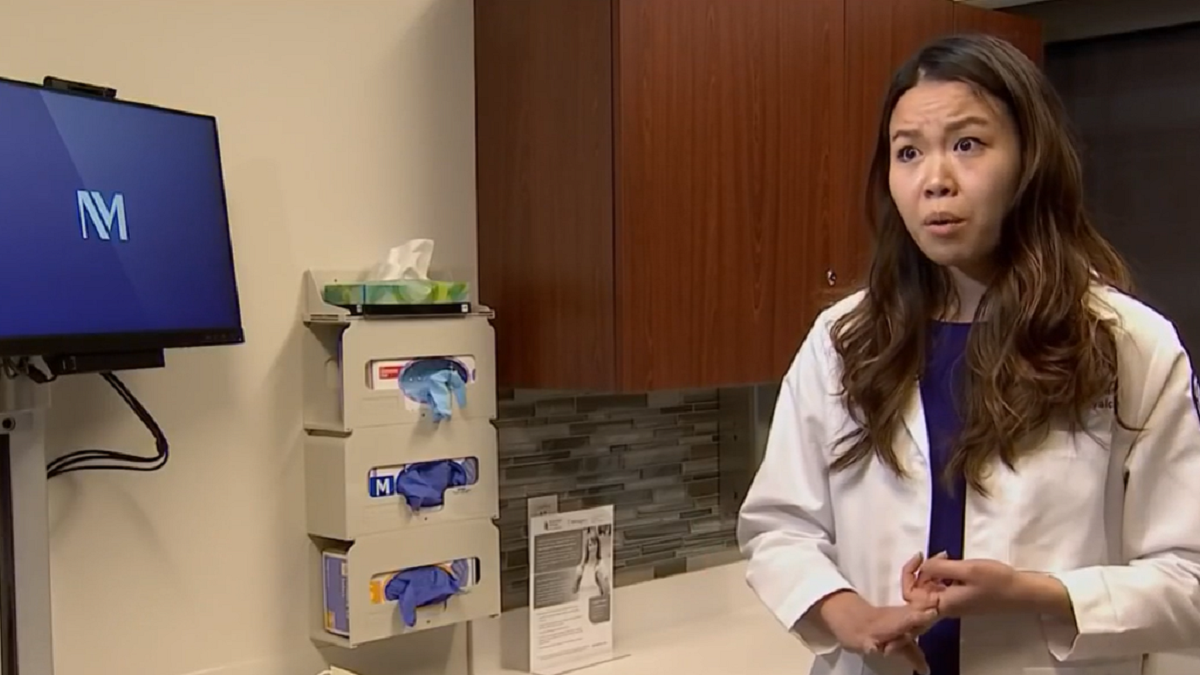
Stomach flu cases are surging, some severe enough that people in the Chicago area are heading to the emergency room. And it all comes as the Centers for Disease Control and Prevention issued a warning about a new stomach bug rising in prevalence. NBC 5’s Lauren Petty reports.
Stomach flu cases are surging, some severe enough that people in the Chicago area are heading to the emergency room. And it all comes as the Centers for Disease Control and Prevention issued a warning about a new stomach bug rising in prevalence.
“We are seeing a lot of people come in with the stomach flu,” said Dr. Evelyn Huang, an emergency room physician at both Northwestern Medicine and Lurie Children’s Hospital in Chicago.
Huang said the most common stomach bug is norovirus. Recent data from the CDC shows a rise in norovirus cases in the Midwest in recent weeks.
While most norovirus cases typically occur between November and April in a given year, cases in the Midwest have spiked dramatically since mid-January, according to the latest metrics.
Feeling out of the loop? We'll catch you up on the Chicago news you need to know. Sign up for the weekly Chicago Catch-Up newsletter here.
“We're seeing a lot of children, and adults too, who are concerned either because they're immunocompromised, because they've had symptoms for a long time,” Huang said.
Norovirus, often referred to as the stomach flu, though it is not related to influenza, "is a very contagious virus that causes vomiting and diarrhea" in people of all ages, the CDC states.
“Typically people will see symptoms around 24 to 48 hours after they've developed the virus and symptoms can last two to three to four days,” Huang said.
Health
Meanwhile, a drug-resistant strain of bacteria that can cause similar symptoms is quickly becoming more common, the CDC warned in a health alert.
The bacteria, shigella, causes an infection called shigellosis that can come with gastrointestinal symptoms, like diarrhea and stomach cramps. An increasing percentage of shigella samples are turning out to be extensively resistant, meaning they have resistance to all five recommended antibiotic treatments, the CDC said.
But the bug is not the same as norovirus, according to Huang.
"Shigella can cause vomiting and diarrhea and belly pain, but often we see bloody diarrhea as well," Huang said.
Symptoms for norovirus include:
- Diarrhea
- Vomiting
- Nausea
- Stomach Pain
- Fever
- Headache
- Body Aches
According to Illinois' health department, "many of the noroviruses cause similar symptoms."
If you or your family get sick with the stomach bug, doctors said the best way to avoid the emergency room is by staying hydrated.
“If you can't keep down food, drinking things like Pedialyte or Gatorade and then dealing with symptoms with over the counter medicines, like Maalox, Tylenol, ibuprofen, things that will kind of help you just feel better,” Huang said.
Because norovirus is a viral infection, antibiotics won’t treat it. If your symptoms are severe, you should reach out to a doctor for help.
“If someone is having signs of dehydration, so they are vomiting so much that nothing is staying down. They're getting excessively tired, their mouth is dry or they're no longer urinating, they should be coming into the emergency department,” Huang said.
Norovirus is highly transmissible, but it’s important to note hand sanitizer doesn’t work well to stop it.
“You need to be washing your hands with soap and water. That is the only way to kill it,” Dr. Huang said.
Health experts recommend washing your hands for at least 20 seconds before eating or preparing meals to remain stomach-flu free.